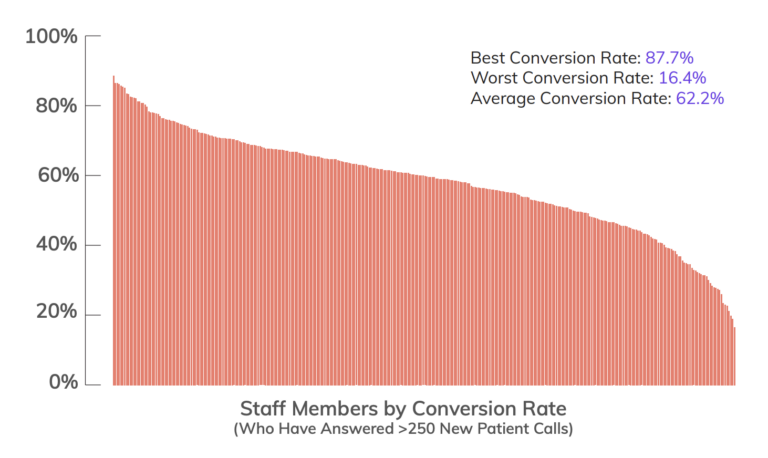There are only 3 ways to increase new patient revenue, and you’re ignoring one.

Increasing new patient revenue is one of the main goals for any growth-focused healthcare or dental practice. To accomplish this there are a multitude of activities that practices engage in, however they all fall into one of three categories. See if you can spot the one that most practices overlook:
1. Increasing new patient leads. Probably one of the first considerations for any provider is “how can marketing bring us more new patients?” And for good reason; advertising and other marketing activities are one of the primary ways to drive new patient inquiries. Other activities in this category would include developing referral strategies, offering promotions, expanding geographically, or expanding the services offered.
2. Convert more leads to appointments. Leads are not patients. In fact, Liine analyzed 325,000 new patient phone calls and forms from 2022 and found that only 54.1% of leads ever booked an appointment. This category involves optimizing for conversions, and includes activities such as staff training, improving speed-to-lead, lead management, and operational changes. Tracking performance at this stage also provides the feedback loop for marketing to determine acquisition costs and campaign performance.
3. Increasing revenue per patient. Growth-focused practices also desire to increase the value of each new patient. There’s more to this than optimizing your pricing strategy. Consider cross-selling complementary products and services, building customer loyalty, and earning the patient’s repeat business. These considerations not only increase value for your practice, they provide better care and experiences for the patient.
It should be no surprise that the second piece – lead conversion – is the most ignored part of the patient journey. And this isn’t really the fault of the practices. Most practices don’t have a dedicated “sales” team – it’s unrealistic to ask staff to record and track every lead activity, data point, and outcome through multiple touchpoints. Practices rarely even have the marketing attribution tools to connect a patient’s web activity to an inbound phone call. And so, it is much easier to focus on lead generation activities and EHR patient metrics.
However, this leaves a huge blind spot for practices. It’s hard to imagine any other type of business not knowing how many inquiries they’re getting, how many convert, why leads aren’t converting, how staff perform, etc.
Despite the challenge, let me share some encouragement as you consider diving into conversion metrics. It is very common for conversion optimization efforts to quickly increase new patient bookings by 10-40%. Our own study also found individual staff member booking rates ranging from roughly 16% to 88% for new patient inquiries. That is quite the gap – if you aren’t uncovering performance issues, you are undoubtedly missing out on revenue.

Lead tracking and conversion optimization is no small subject, but I hope I have piqued your interest. I would encourage you to do your homework, research tools that can help you piece things together. Or complete platforms like Liine (shameless plug!) that make it painless to track every lead with marketing attribution and healthcare-specific insights. You can also read more about this subject in our post What is healthcare “Lead Management?” Why is it so important?